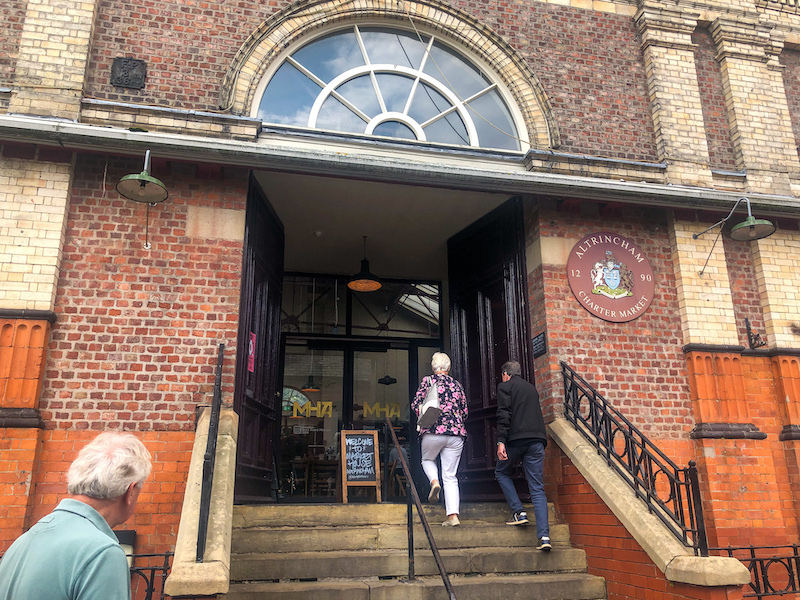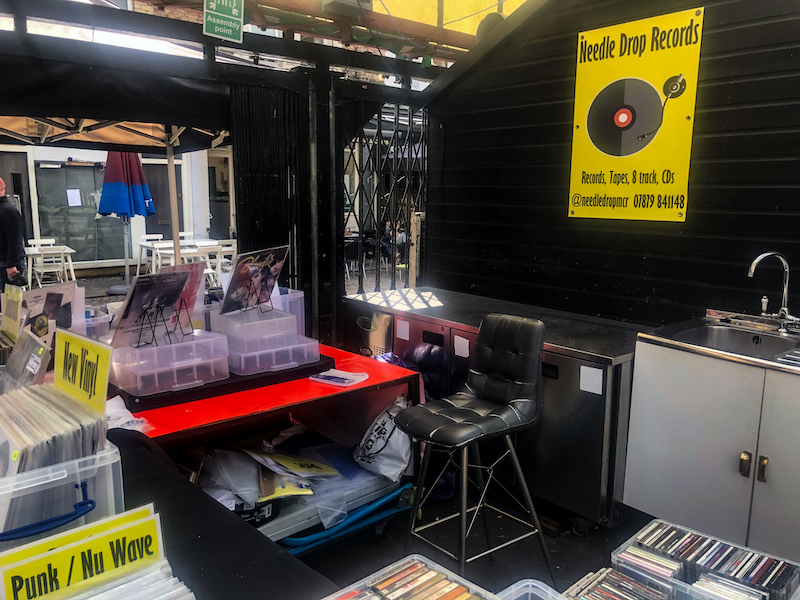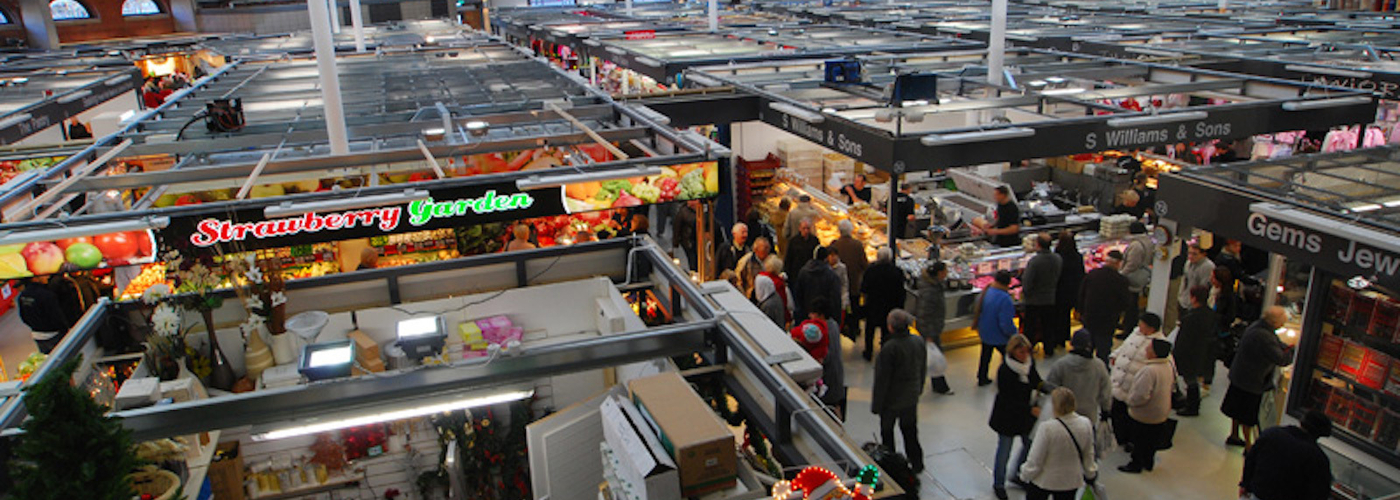Sam Shaw takes a look at a selection of markets and asks why some succeed while others suffer
From Ashton to Altrincham, Bury to Bolton, markets and market halls have long been the beating heart of our hometowns, acting as focal points for communities for hundreds of years. No matter where you grew up, chances are it will have at one time had a market.
But across Greater Manchester the health of marketplaces, and ultimately the towns they sit in, is hugely varied. For some the market is still a bustling and lively place to visit, but for others the reality is altogether different, with some market towns suffering from a lack of investment and a dwindling customer base.
This has led to a lot of market towns seeing their once bustling market grounds become quiet, with traders leaving their post and the ones that remain seeing less trade than before. So this begs the question, which market towns are doing it right, and which are struggling to return to their former glory?

The hallowed market grounds of Ashton Under Lyne have been a hub for commerce from as early as the 13th century, with Ashton having been granted a charter in the year 1284. Over more than 700 years it cemented itself as one of the major markets lying on the outskirts of Manchester, but it was on 25 May 2004 that the long run of success came to an abrupt halt.
The indoor market that had become a symbol of the success of Ashton caught fire in the early hours of the morning, reportedly due to an electrical fault. The interior was all but destroyed and 116 stalls were also lost to the blaze. Traders lost their livelihoods in a matter of hours and a local community was devastated.
It was a severe blow but just four years later the market hall would reopen, a £16m refurbishment upgrading indoors while retaining its original exterior. The indoor market was once again alive and well.

Shopping habits have changed in a big way due to the rise of internet shopping, and in January 2015 the council allocated £4.5 million into regenerating the market. This modernised the site significantly but at the same time altered the look, and as a result the charm, of the market forever. Today it is largely unrecognisable from the early 2000s, according to resident and customer at Aston Market for over 40 years, Leslie Pollitt.
"At one time it used to be great, but it has just gone downhill now," said Leslie. "The council is supposed to be putting money into it so it has to change. I get the Tameside Reporter every week and it says there they are going to be doing it up, but it wasn't long ago that they did it like this and it hasn't worked."
The renovations carried out to the markets back in 2015 saw fixed shops and new canopied stalls fitted, but the modernisation had mixed results.
“The nature of shopping is different now,” Leslie continued. “Everyone is doing it online. I used to work at the old Wilkinsons and I would come out and it was absolutely packed! There were three or four amusement rides as well and my lads used to go on them.
"They have the trams as well coming in with people on so there is no reason it can't be like it used to be. The market hall isn't even the same as it used to be since it burned down. I’m not saying it isn’t good but it's just not the same as it used to be.”

Look at the stalls on a non-market day and you'd be minded to agree with Leslie. The market has lost something along the way, and with new development from levelling up funding promised, locals are hopeful to see the market get back to its past successes.
The feeling is shared by traders as well. Friends Packendra Shah and Karen Pickles both run stalls on the market, with Packendra having run his since the early 2000s, and both have seen the reality of market trading change significantly.
“At one time you had to wait in a queue to get a stall!” Pakendra said. “Some days you didn't get a stall, so there was really hot competition for it. The owners would be making decent money out of it as well.
"I hope that in the future it gets back to that level. We all want it to be like Bury market, which is busy all week. It used to be like that here.”
“Tuesday and Sunday are the only two days that are busy,” Karen added, “The rest of the week it's dead! You could walk through the market and just see people sat on the stalls waiting for customers.”
With both the buyers and traders agreeing over the state of the market, only time will tell for this once great market town.

Perhaps the most well known of all of Manchester's marketplaces is Bury, which enjoys international recognition and attracts more than 150,000 customers a week to its stalls, which now number over 350.
The heritage of Bury market dates back to the 15th century, when a charter was granted for the site to a local knight named Sir Thomas Pilkington, and throughout the course of its history the location of the market has changed numerous times across the town centre, with the current site being used since the early 70s.
The present location has been unchanged for the past 53 years and moved in 1971 due to a fire breaking out in the old market hall in November of 1968. The New Market Hall that was built cost an eye-watering sum of £900,000, but was described as one of the most architecturally striking buildings and best equipped of its kind.
It was only recently that the iconic gull-winged New Market Hall was closed following the discovery of Reinforced Autoclaved Concrete (RAAC) in the roof. This led to the closure on October 26th 2023, and it has remained closed since. Much like Ashton market, the closure of the famous market hall forced out 49 traders into the nearby shopping centre and it has hit the town's market tourism.
Unfortunately, the RAAC found in the roof poses a serious risk of collapse, and repairs to the building will be neither a fast nor an easy fix. Reports from surveyors estimate that to deal with the RAAC and other repairs will cost up to £6 million.
While New Market Hall remains closed for the foreseeable future, life in the outdoor market still goes on with traders lining the narrow maze of stalls and selling their wares every Wednesday, Friday and Saturday.

But how much of an impact is the closure having on the success of Bury market? Liaqat Ali, a longtime trader from inside the New Market Hall (now having moved to an outdoor stall), says he's definitely noticed a difference in footfall.
“I've been on the market for about 21 years now,” Liaqat explained. “It used to be popular back then but thanks to the problems with the indoor market it has gone down a bit in popularity now. We definitely need more funding for it, they are doing some work in a couple of months' time but there needs to be something done for the indoor market.
"After lockdown it got really busy again but then it slowed down for about a year and a half. Just as it was getting busier again they closed the indoor because of the roof and that's why they moved me here. But closing the indoor market had an effect on the outside as well; a lot of people came for the indoor market but now they don't come, as they would normally visit the indoor market primarily.”
While Liaqat admitted that the indoor market closure had taken a toll on him and the market in general, he remains hopeful for the future.
“The reputation of Bury market is really good, and it always will be," he said. "The indoor market has closed before and it has carried on so we will be ok.”

On the other side of Greater Manchester sits the town of Altrincham. With a charter dating back to 1290, Altrincham is one of the earliest market towns you can still visit.
Granted a charter in 1290 by Baron Hamon de Massey, the market quickly became a vital trading hub for the region. Over the centuries, it evolved from a traditional market selling local produce and livestock to a modern-day destination known for its vibrant food hall, artisanal stalls and community events.
The whole market underwent renovation in 2013 thanks to Jenny Thompson MBE and Nick Johnson MBE, who took over operations of the market from Trafford Council and used £550,000 of council funding to renovate and improve the market site, transforming it into a popular social and culinary space, while still retaining its historic charm and significance.
Today it stands as a celebrated example of how heritage sites can be revitalised to serve contemporary needs while preserving their historical essence and is host to a range of independent shops and artisan traders.

One independent stall is Off The Needle Records, specialising in vinyl, and owner Susan Keaney explained that while Bury Market has the history and a sense of the high street of old, Alty Market has its own style and way of operating.
“I think the market has been looked after really well," she said. "I've been here since last September and it has remained nice and steady throughout.
“It is very different to Bury market,” Susan said. “Bury market is like a high street on a market, whereas this one is a bit more individual. I'm a huge fan of Bury market, but they both target different things. This place offers more individual things, so it has independent clothesmakers, potters, independent record stalls and other things.”

Across all three of the markets visited, there are clear patterns to note. Renovation seems to be one of the key factors when it comes to the success of a market. One the one hand renovation has not had the desired effect for Ashton, taking away the charm and ultimately the customer base of its market. On the other hand Altrincham market has successfully modernised and in doing so boosted local business. And whilst Bury market is facing a drop in customers due to ongoing renovation of the indoor market, the reputation it holds is sure to keep Bury market thriving until the market hall is repaired.
Manchester’s market towns have weathered many storms in their decades and even centuries in existence. Now that fresh challenges present themselves once again, along with a changing tide in what people actually go to a market to buy, and how often, the question that arises is much the same as it’s always been - are Manchester’s market towns not simply a thing of the past, but something that can provide a community hub for the towns of the region in the decades to come?
Get the latest news to your inbox
Get the latest food & drink news and exclusive offers by email by signing up to our mailing list. This is one of the ways that Confidentials remains free to our readers and by signing up you help support our high quality, impartial and knowledgable writers. Thank you!

Join our WhatsApp group
You can also get regular updates on news, exclusives and offers by joining the Manchester Confidential WhatsApp group.














